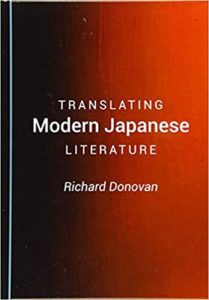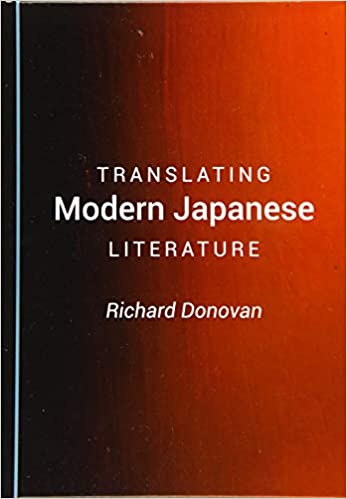


Review by Amy Chavez
Due to the growing reader interest in Japanese authors, and government grants to translators and publishers with an aim to increase global awareness of nihon bungaku, the time is ripe for a book on the mechanics of translating Japanese into English.
Richard Donovan’s Translating Modern Japanese is meant for classroom use, but any individual wanting to know more about translating will find this book extremely helpful. If you’ve ever wondered about the translation process (read the Japanese text first, then translate? Translate as you go over the Japanese text the first time?), how translators choose vocabulary among myriad possible synonyms, and how they handle the tricky questions of translating cultural references, this book provides some answers.
Donovan introduces four short Japanese texts (10-20 pages), introduces translation concepts, then asks the reader to study the text and translate the story on their own. Later, the student compares their translation to his. He also includes alternative translations and renditions of other established translators to help the reader see how the target text unfolds in English according to the vision of the individual translator.
The most valuable aspect of this book, IMO, is that Donovan isn’t just an excellent translator; he is an extremely competent writer in English as well. This point is often overlooked when people talk about translation, presuming that as long as the translator understands the target language (in this case Japanese), they can translate into their native tongue. The reality, however, is that it’s a two-way street and the translator must be extremely adept, even talented, in both languages in order to produce a competent, or in the case of literary translation, compelling, rendering in English. This, the author succeeds with flying colors.
While this is an introductory text, one shouldn’t presume that it is an easy one. Readers are expected to be advanced speakers who can already read Japanese. The focus is on grammar, writing technique, literary devices and themes, and voice, as well as sentence-level concerns such as levels of discourse, speech markers, mimetics, metaphorical description, double negatives, etc.
The source texts Donovan has chosen, all stories by well-known authors, are quite touching. Learning to translate texts of the greats of Japan’s modern era including Natsume Sōseki, Miyazaki Kenji, Yokomitsu Riichi, and Tokuda Shūsei is sure to satisfy any prospective student of translation.
